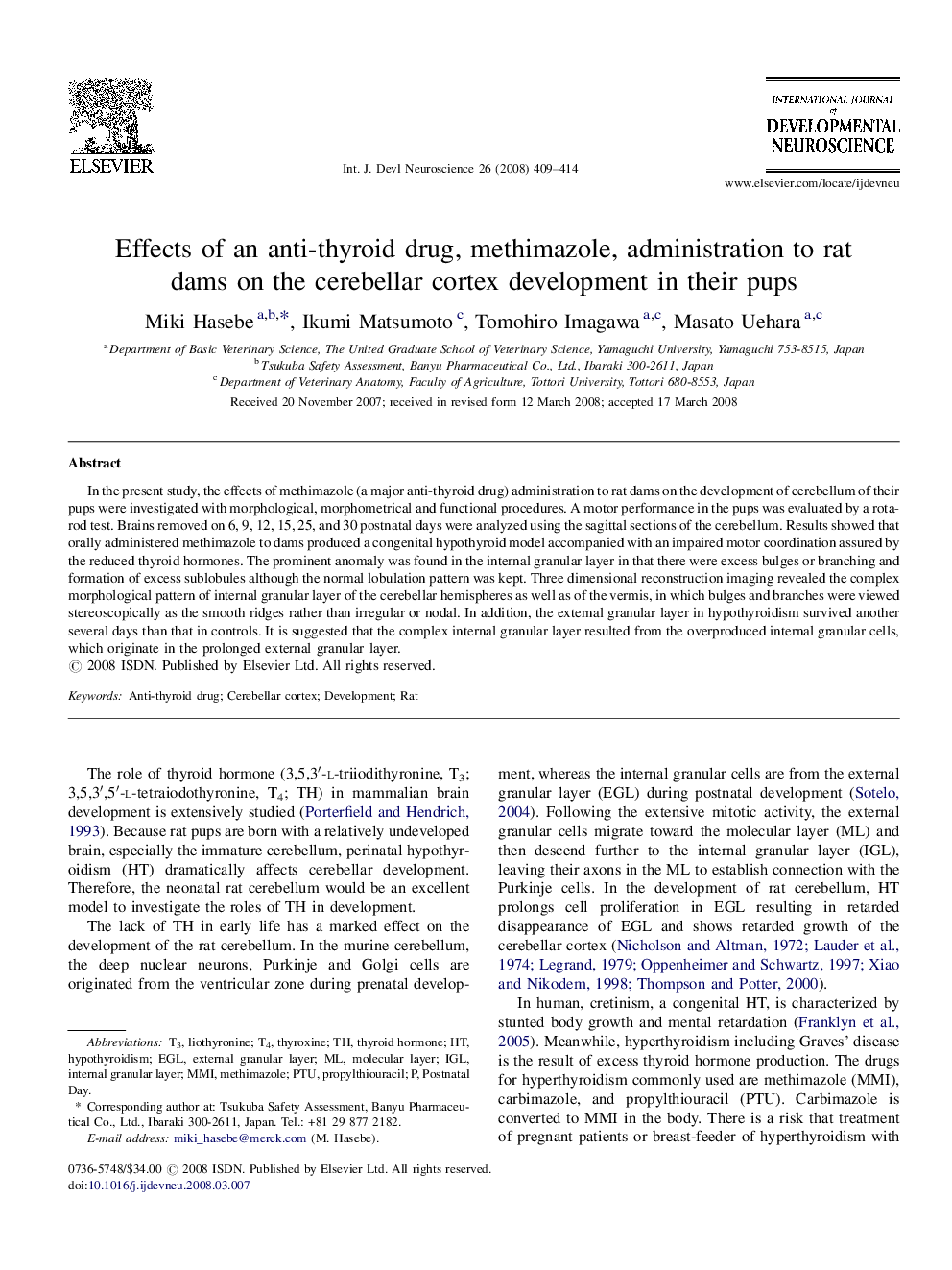| Article ID | Journal | Published Year | Pages | File Type |
|---|---|---|---|---|
| 2786673 | International Journal of Developmental Neuroscience | 2008 | 6 Pages |
In the present study, the effects of methimazole (a major anti-thyroid drug) administration to rat dams on the development of cerebellum of their pups were investigated with morphological, morphometrical and functional procedures. A motor performance in the pups was evaluated by a rota-rod test. Brains removed on 6, 9, 12, 15, 25, and 30 postnatal days were analyzed using the sagittal sections of the cerebellum. Results showed that orally administered methimazole to dams produced a congenital hypothyroid model accompanied with an impaired motor coordination assured by the reduced thyroid hormones. The prominent anomaly was found in the internal granular layer in that there were excess bulges or branching and formation of excess sublobules although the normal lobulation pattern was kept. Three dimensional reconstruction imaging revealed the complex morphological pattern of internal granular layer of the cerebellar hemispheres as well as of the vermis, in which bulges and branches were viewed stereoscopically as the smooth ridges rather than irregular or nodal. In addition, the external granular layer in hypothyroidism survived another several days than that in controls. It is suggested that the complex internal granular layer resulted from the overproduced internal granular cells, which originate in the prolonged external granular layer.
